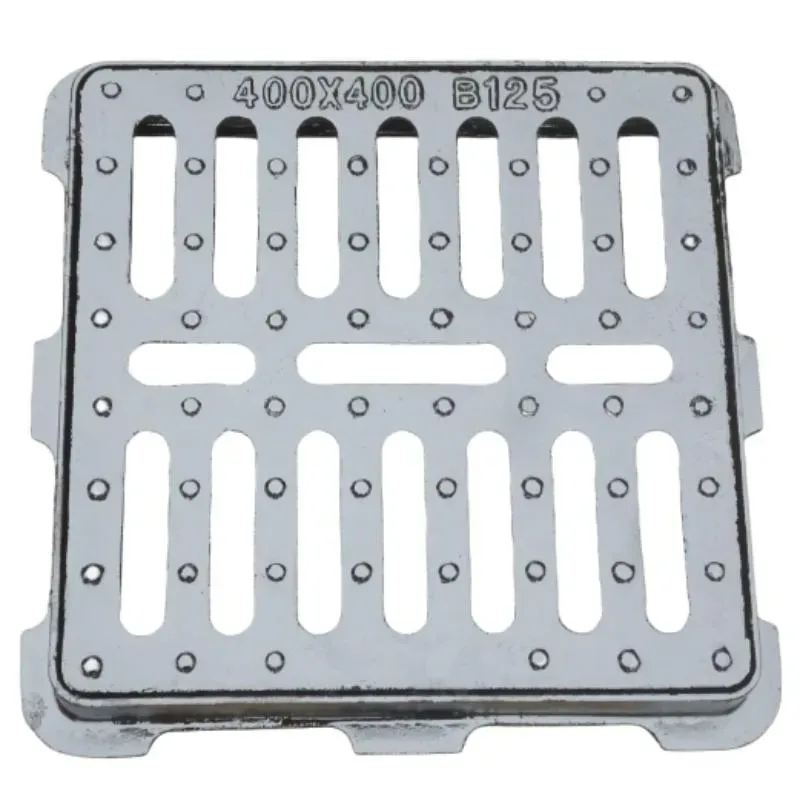Heavy-Duty Gully Grates for Industrial and Public Spaces
Managing water drainage in industrial and public spaces requires robust solutions that ensure safety and efficiency. Among the key components of a reliable drainage system is the gully grate cover, designed to handle high-pressure environments while maintaining functionality and durability.

The Importance of Gully Grate Covers in Drainage Systems
A gully grate cover is more than just a surface element; it is a critical part of the drainage system. These covers are essential for protecting drainage channels from clogging due to debris, leaves, and other waste materials while allowing water to flow efficiently.
In industrial spaces, heavy machinery and vehicular traffic demand durable gully grate and frame combinations that can withstand significant weight and impact. D400 gully gratings are particularly designed for such environments, offering the strength to handle loads of up to 40 tonnes. This makes them a preferred choice for roadways, parking areas, and industrial zones where high-pressure performance is essential.
Why D400 Gully Gratings Are a Top Choice for Urban Areas
The D400 gully grating is specifically engineered for use in areas with heavy traffic, such as highways and loading docks. Made from ductile iron, these grates provide exceptional strength and resilience. Their robust construction ensures they can endure repetitive stress without compromising their functionality or structural integrity.
Additionally, road gully gratings are often designed with anti-slip surfaces to enhance safety for pedestrians and vehicles. The precise grid pattern in these gratings not only facilitates optimal water flow but also prevents the accumulation of slippery substances like oil and mud, reducing the risk of accidents in high-traffic areas.
The Versatility of Stainless Steel Gully Covers
For environments that require a balance of durability and aesthetics, stainless steel gully covers are an ideal choice. These covers are commonly used in public spaces such as parks, shopping malls, and airports due to their sleek appearance and resistance to corrosion.
Unlike traditional materials, stainless steel is highly resistant to harsh chemicals, making it suitable for areas exposed to pollutants or cleaning agents. Moreover, the material’s long lifespan reduces the need for frequent replacements, making it a cost-effective and environmentally friendly solution.
When combined with a sturdy gully grate and frame, stainless steel covers can handle both aesthetic and functional demands, making them a versatile option for urban and industrial applications.
Road Gully Gratings: Ensuring Safety and Efficiency
Road gully gratings are integral to maintaining smooth traffic flow and preventing waterlogging on busy streets. These gratings are often paired with robust gully grate and frame systems to ensure they stay securely in place, even under heavy loads or fast-moving vehicles.
In addition to their practical function, these gratings are designed to minimize noise caused by traffic passing over them. Advanced designs incorporate features like rubber sealing to reduce rattling, improving the urban environment for residents and commuters alike.
Furthermore, D400 gully gratings installed on roadways often include tamper-resistant features, preventing theft and ensuring that the drainage system remains functional and secure over time.
Choosing the Right Gully Grate and Frame for Your Needs
Selecting the appropriate gully grate and frame combination depends on the specific requirements of the space. For industrial zones, D400 gully gratings offer the load-bearing capacity needed for forklifts and heavy vehicles. In contrast, stainless steel gully covers are better suited for areas where corrosion resistance and aesthetic appeal are priorities.
To maximize the performance and longevity of these components, proper installation and regular maintenance are essential. Cleaning the gully grate cover periodically prevents blockages, while inspecting the road gully grating for wear and tear ensures safety and efficiency.
Investing in high-quality gully grate and frame solutions not only enhances the resilience of urban infrastructure but also minimizes maintenance costs and safety risks. As cities and industries continue to expand, these reliable drainage components will remain critical in supporting efficient water management and infrastructure integrity.
-
Why Manhole Covers Are Round – The Smart Choice for Safety & Durabilityသတင်းJun.13,2025
-
Strong Covers, Safer Drivewaysသတင်းJun.13,2025
-
Reliable Drainage Solutionsသတင်းJun.13,2025
-
Heavy-Duty Circle Manhole Covers Built to Lastသတင်းJun.13,2025
-
Durable Round Drain Covers Built for Heavy Duty Useသတင်းJun.13,2025
-
Durable & Reliable Cast Iron Manhole Covers for Heavy-Duty Useသတင်းJun.13,2025
-
The Essential Component for Safe Urban Infrastructureသတင်းMay.14,2025
